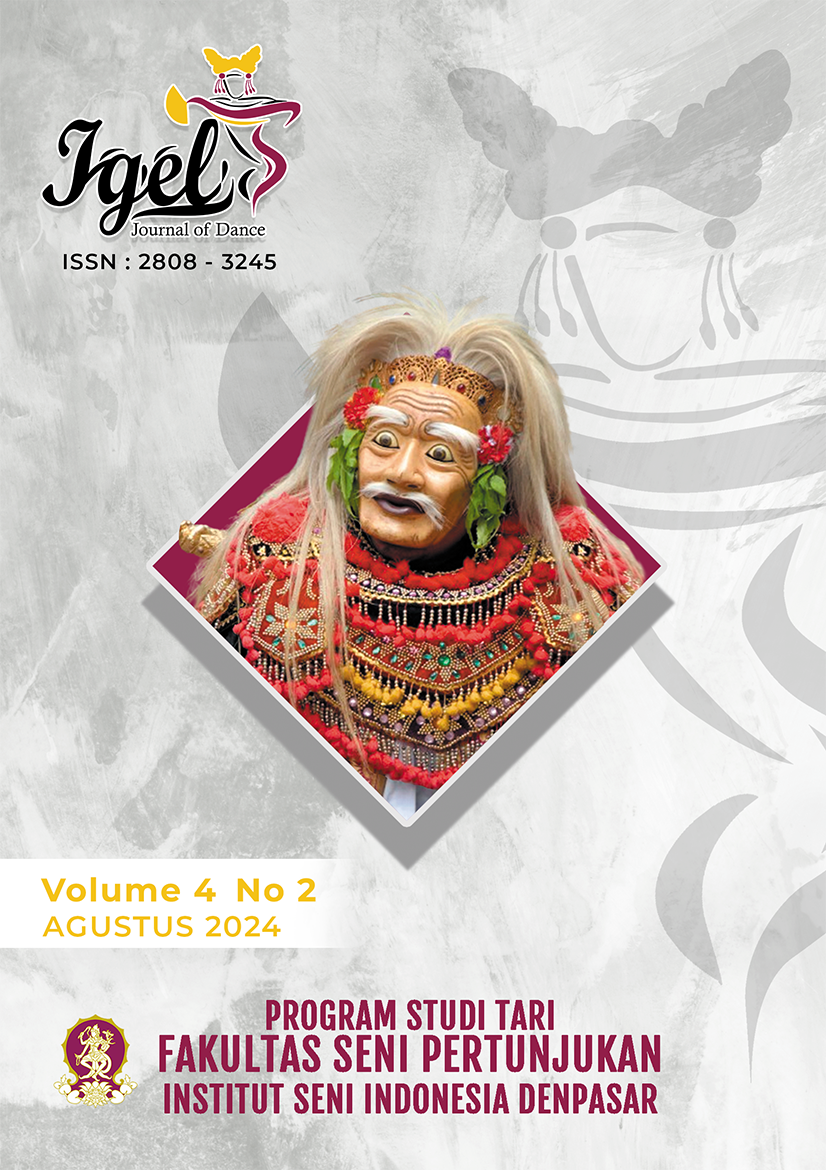MOGO GAPII
DOI:
https://doi.org/10.59997/jijod.v4i2.3385Keywords:
Mogo Gapii, Perang, Upacara, DamaiAbstract
The Mogo Gapii dance work started from a creative idea, namely Bakar Batu. It is necessary to pay attention to the limitations in order to clarify the extent of the ideas being discussed. Bakar Batu is a Papuan tradition in the form of a cooking ritual carried out together by village residents which aims to express gratitude, permission, death, bersilahturahmi (gathering of relatives and relatives, welcoming happiness (birth, traditional marriage, coronation of tribal chief), as well as to gather soldiers who died due to inter-tribal wars. This stone burning tradition is believed to have been going on for hundreds of years and is the oldest tradition in Papua. Stone burning is an original tradition of mountain tribe communities including the Agmungme, Dani, Lani, Damal, Nduga, Moni and Ekari tribes. The way to differentiate the Burning Stone Ceremony after burning between tribes from others is at the beginning of the Burning Stone ceremony itself. If the ceremony begins with men shooting pigs, then dancing together with jumping movements and circular patterns filled with shouts. which is interpreted as encouragement, it means the Stone Burning Ceremony after the tribal war. If at the beginning of Bakar Batu the men do not shoot arrows at the pig but instead immediately slaughter the pig as usual, it means that the Bakar Batu Ceremony is a ceremony such as marriage, birth, thanksgiving after the harvest and so on.
References
Wirawan, 2011, Pesta Adat Bakar Batu Papua, PT. Wadah Ilmu.
Dibia, I Wayan, 2020, Panca Shiti Ngawi Sani Metodologi Penciptaan Seni, LP2MPP Institut Seni Indonesia (ISI) Denpasar.
_______ 2020, Ngunda Bayu Teknik Pengolahan Tenaga Dalam Seni Pertunjukan Bali, Denpasar, Geria Olah Kreativitas Seni (GEOKS).
_______ I Wayan, 2003, Bergerak Menurut Kata Hati: Metode Baru Dalam Menciptakan Tari. Jakarta: Ford Foundation dan Masyarakat Seni Pertunjukan Indonesia.
Djelantik, A. A. M, 1999, Estetika: Sebuah Pengantar, MSPI dan Arti, Bandung.
_________ 2004, Estetika: Sebuah Pengantar, MSPI dan Arti, Bandung.
_________ 1990, Pengantar Dasar Ilmu Estetika Jilid I Estetika Instrumental, Denpasar: Sekolah Tinggi Seni Indonesia (STSI) Denpasar;
Hadi, Sumandiyo, 2017, Koreografi Bentuk- Teknik- ISI. Yogyakarta, Cipta Media
______________ 2017, Koreografi Ruang Proscenium, Yogyakarta, Cipta Media
______________ 2003, Mencipta Lewat Tari, Yogyakarta, Manthili.
______________ 1996, Aspek-aspek Dasar Koreografi Kelompok, Yogyakarta, Manthili.
Maryono, 2012, Analisa Tari, ISI Press Solo, Solo
Martono, Hendro, 2012, Ruang Pertunjukan dan Berkesenian, Yogyakarta, Cipta Media.
Meri, La dan Russal Meriwether Hughes, 1986, Dance Composition The Basic Elements (diterjemahkan oleh Seodarsono Elemen-elemen Dasar Komposisi Tari). Yogyakarta, Lagaligo untuk Falkultas Kesenian Institut Seni Indonesia Yogyakarta
Additional Files
Published
Issue
Section
License
Copyright (c) 2024 GALANG BIMA PUTRA WINDURA WINARKO

This work is licensed under a Creative Commons Attribution-NonCommercial-ShareAlike 4.0 International License.
Volume 2 Nomor 1, Juni 2022








